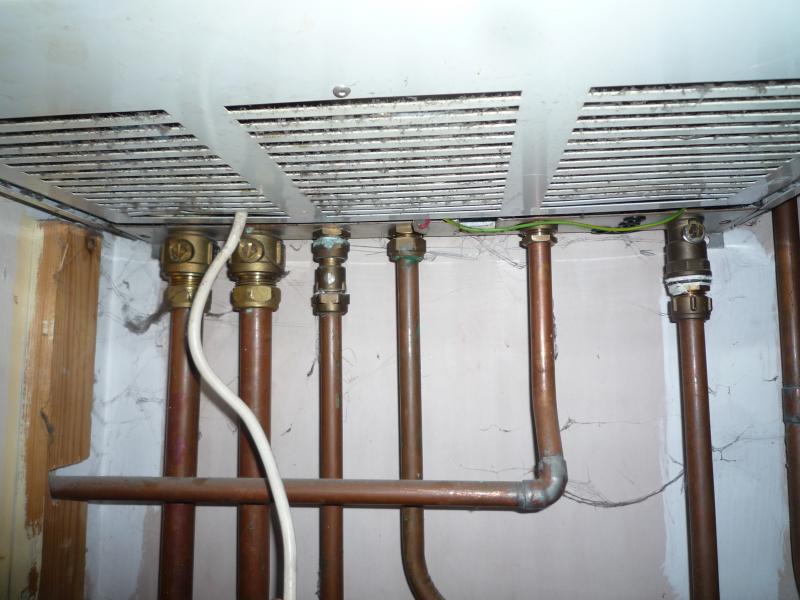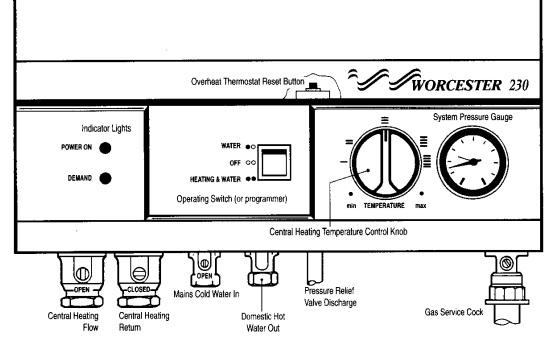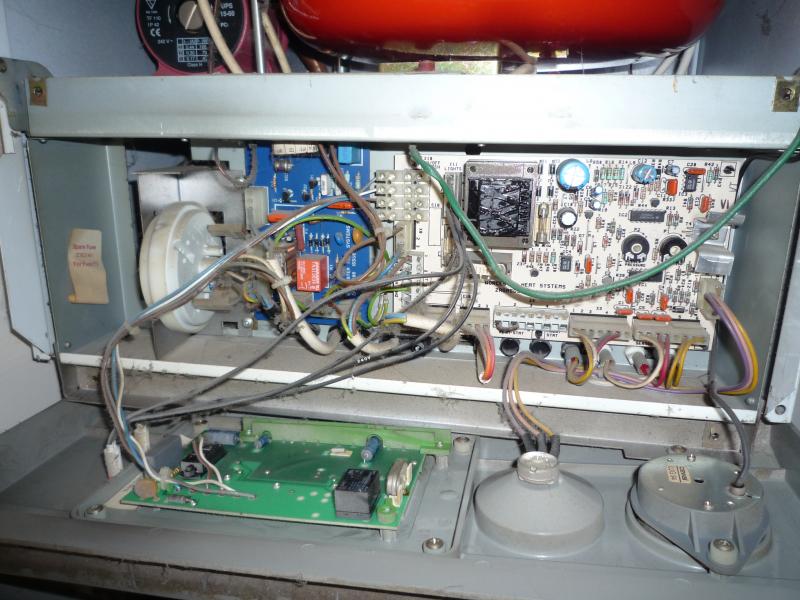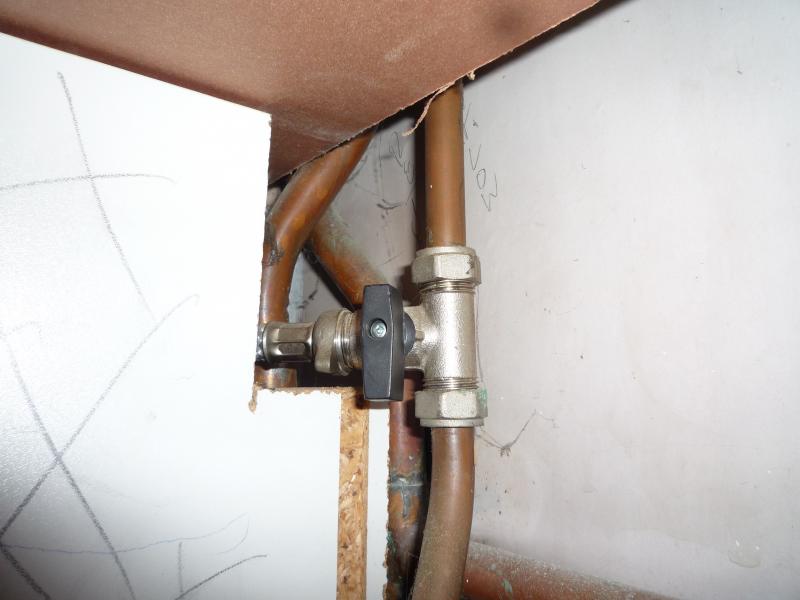Hi,
Sorry to ask dumb questions but I'm struggling.
I have an old Worcester 230 boiler (c 1994 I believe). I have recently been having to bleed the radiators almost daily, and some searching around on the web suggested that this might be caused by low boiler pressure.
I checked the dial on the front of the boiler, and sure enough, it is reading only 0.5 bar. So, I think I need to re-fill it, but I can't figure out how.
I've read this page:
//www.diynot.com/forums/viewtopic.php?t=38904
But I can't see anything that looks like the filling loops described.
Can anyone please help me find this loop?
This is what I see when I look at the underside of the boiler:
On the wall behind the pipes is written in pencil (starting from left): Return Flow Cold Hot. There is nothing written behind the two rightmost pipes.
The three left-hand pipes, and the far right pipe, each have a screwdriver-type valve, and all were already set to On when I got there.
The Worcester user guide shows the following:
If it helps, this is the view with the front control panel removed:
Thanks in advance for any tips on where to find the filling loop.
Sorry to ask dumb questions but I'm struggling.
I have an old Worcester 230 boiler (c 1994 I believe). I have recently been having to bleed the radiators almost daily, and some searching around on the web suggested that this might be caused by low boiler pressure.
I checked the dial on the front of the boiler, and sure enough, it is reading only 0.5 bar. So, I think I need to re-fill it, but I can't figure out how.
I've read this page:
//www.diynot.com/forums/viewtopic.php?t=38904
But I can't see anything that looks like the filling loops described.
Can anyone please help me find this loop?
This is what I see when I look at the underside of the boiler:
On the wall behind the pipes is written in pencil (starting from left): Return Flow Cold Hot. There is nothing written behind the two rightmost pipes.
The three left-hand pipes, and the far right pipe, each have a screwdriver-type valve, and all were already set to On when I got there.
The Worcester user guide shows the following:
If it helps, this is the view with the front control panel removed:
Thanks in advance for any tips on where to find the filling loop.





